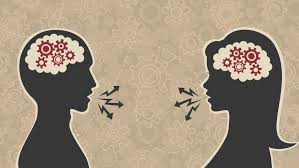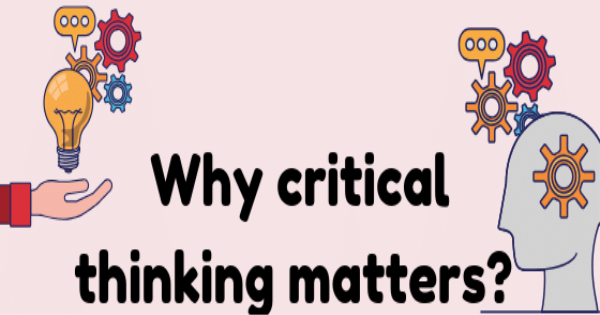Language is more than just a means of communication—it's a window into how we perceive, understand, and interact with the world. While the vocabulary and grammar we use may seem like tools for expressing thoughts, many linguists and cognitive scientists argue that language actually shapes the very thoughts we think. This concept, known as linguistic relativity, has sparked considerable debate and research over the decades.

In this article, we’ll explore how languages shape the way we think, how different cultures encode meaning, and what science says about the relationship between language and thought. From the structure of sentences to the words we use to describe time, color, or space, language profoundly influences cognition, perception, and worldview.
1. The Theory Behind It: Linguistic Relativity
The foundation for understanding how language shapes thought lies in the Sapir-Whorf hypothesis. Edward Sapir and his student Benjamin Lee Whorf proposed that the language we speak influences our patterns of thought and perception.
The hypothesis is often divided into two forms:
-
Strong linguistic determinism: Language determines thought entirely.
-
Weak linguistic relativity: Language influences thought but does not strictly determine it.
Although the strong form is widely debated and generally dismissed in modern linguistics, the weaker form has found strong empirical support in recent cognitive science studies.
2. Language and Perception of Color
One of the most cited examples in support of linguistic relativity is the perception of color. Different languages categorize the color spectrum in various ways. For instance:
-
Russian has distinct words for light blue (goluboy) and dark blue (siniy), while English just uses "blue."
-
The Himba people in Namibia have a very different color classification system that doesn’t align with Western standards.
Research Insight: Studies show that Russian speakers are faster at distinguishing between light and dark blue compared to English speakers. Similarly, Himba speakers may struggle to distinguish between blue and green shades the way English speakers do, but can spot subtle differences in shades of green more easily.
These findings suggest that the language you speak can train your brain to be more or less sensitive to particular visual distinctions.
3. Language and Time Perception
Another compelling domain where language influences thought is time.
-
English speakers typically view time as linear and horizontal—the past is "behind," and the future is "ahead."
-
Mandarin Chinese includes both horizontal and vertical metaphors for time. The phrase “up month” can mean last month, and “down day” can mean tomorrow.
-
The Aymara people of South America, surprisingly, conceive the past as in front of them and the future as behind—based on what is "known" and "seen."
Such linguistic metaphors for time influence how people physically gesture, organize events, and even interpret stories. In experiments, Mandarin speakers were quicker to associate vertical spatial cues with time-related words than English speakers, indicating a cognitive imprint shaped by their language.
4. Gender in Language and Thought
Grammatical gender is attributed to nouns by many languages. Although it may sound to be a grammatical peculiarity, it carries a practical bearing on how speakers view objects.
For instance, Spanish has the word for “bridge” (puente) that is masculine and, in German (Brücke), feminine. Research shows that: In Spanish, a bridge could be referred to as “strong” or “long”.
The German speakers may use the terms “beautiful” or “elegant” to describe it. These adjectives coincide with stereotypical gender associations and demonstrate the way the grammatical gender influences thought on a subconscious level.
5. Spatial Orientation and Navigation
Imagine giving someone directions. If you are talking English, you could say, “Turn left at the store and right at the next crossroad”. But if you’re speaking Guugu Yimithirr (an Australian Aboriginal language), it is, “Go north at the store and then west at the intersection”. Absolutes such as north, south, east and west are preferred by languages such as Guugu Yimithirr as opposed to relativity’s left and right.
Native speakers of such languages have an incredible sense of orientation. Studies demonstrate that they are always conscious of cardinal directions regardless of their surroundings or situations of being indoor. This indicates how the linguistic habits form the spatial cognition.
6. Language and Memory
Language doesn’t just affect perception—it also influences memory.
Take the example of how different languages encode agency in events:
-
English: “John broke the vase.”
-
Spanish or Japanese: “The vase broke” (more likely to omit the agent).
Experiments have shown that speakers of English are more likely to remember who did what, while speakers of languages that omit agents are more focused on the outcome. This linguistic pattern affects memory recall, responsibility attribution, and even legal testimony.
7. The Impact of Bilingualism on Thinking
Being bilingual or multilingual introduces even more cognitive flexibility.
Research suggests that bilingual individuals are:
-
Better at switching tasks
-
More adept at perspective-taking
-
Less likely to be influenced by cognitive biases when making decisions in a second language
This “language detachment effect” can help bilinguals make more rational, less emotionally-biased decisions when using a non-native tongue. It's as though language can provide a kind of cognitive distancing.
8. Language, Culture, and Worldview
Language is a vessel of culture. The words available to us often reflect what a culture values or focuses on.
For instance:
-
Inuit languages have multiple terms for different types of snow.
-
Arabic has a rich vocabulary around camels.
-
Japanese uses specific forms for levels of politeness and social hierarchy.
This connection reinforces the idea that language and culture are intertwined, and what we speak is an embodiment of how our societies have evolved.
9. The Role of Language in Problem-Solving
Some languages have built-in ways to describe cause and effect, conditions, and logical reasoning. Programming languages, for example, require exact syntax and structure, training the brain in a specific kind of logic.
Similarly, speaking a language that makes frequent use of conditional clauses (like in German) or logical connectives (like in formal French) can influence how people approach complex problems, think through scenarios, and weigh pros and cons.
10. Neuroscience and Brain Imaging Insights
Modern neuroscience allows us to peek into the brain while people engage in linguistic tasks. Functional MRI studies reveal that:
-
Different parts of the brain activate depending on the language being used.
-
Bilingual individuals may process their two languages in overlapping or separate regions, depending on when and how they learned them.
-
Language affects prefrontal cortex activity—critical for reasoning and decision-making.
These insights lend empirical weight to the idea that language doesn’t just express thoughts—it sculpts them.
11. Language Change, Thought Change
As languages evolve, so too do the ways we think. Consider how gender-neutral pronouns and inclusive language have entered many languages recently. These changes are both reflections of social progress and drivers of it.
Language reform can shift cultural norms. For example:
-
The use of “they/them” as singular pronouns challenges binary gender thinking.
-
De-gendering job titles (e.g., “chairperson” instead of “chairman”) promotes equality.
In this way, changing language can contribute to changing minds.
12. Counterarguments and Limitations
Not all researchers agree on the extent of language’s influence on thought. Critics of the Sapir-Whorf hypothesis argue that:
-
Thought can occur without language, as seen in pre-verbal infants or people with aphasia.
-
Universal cognition underlies all human experiences, regardless of linguistic differences.
However, the balance of evidence supports the weaker form of linguistic relativity: that language influences but does not imprison thought.
Language as a Cognitive Lens
So, how do languages shape the way we think?
-
They guide how we categorize reality.
-
They influence what we notice and remember.
-
They shape how we reason, perceive, and navigate.
-
They reflect and reinforce cultural values.
-
They can either expand or constrain the ways we express our inner worlds.
Language is not merely a mirror of thought—it is also a lens. It doesn’t wholly determine our minds, but it certainly directs and colors them.
Related Articles
-
 Ilmkidunya 05/Aug/2025
Ilmkidunya 05/Aug/2025How to Choose the Right Career Path as a Student
-
 Ilmkidunya 01/Aug/2025
Ilmkidunya 01/Aug/2025Trusted Education Consultants in Pakistan – Students Club
-
 Ilmkidunya 01/Aug/2025
Ilmkidunya 01/Aug/2025How Entry Test Patterns Are Changing in 2025
-
 Ilmkidunya 01/Aug/2025
Ilmkidunya 01/Aug/2025How to Prepare for University Admissions in 2025
-
 Ilmkidunya 27/Jul/2025
Ilmkidunya 27/Jul/2025Study vs. Skill: What Really Gets You Hired in 2025
-
 Ilmkidunya 27/Jul/2025
Ilmkidunya 27/Jul/2025Top 5 Career Options After FSC (Pre-Medical) in 2025
-
 Ilmkidunya 17/Jul/2025
Ilmkidunya 17/Jul/20255 Jobs for Computer Science & IT Students That Do Not Need Programming
-
 ilmkidunya 11/Jul/2025
ilmkidunya 11/Jul/2025Understanding Aptitude and Its Role in Career Planning
-
 Ilmkidunya 08/Jul/2025
Ilmkidunya 08/Jul/2025Top 10 Universities in Lahore – 2025 Guide
-
 Ilmkidunya 01/Jul/2025
Ilmkidunya 01/Jul/2025The Future of Artificial Intelligence in the Job Market
-
 Ilmkidunya 30/Jun/2025
Ilmkidunya 30/Jun/2025How to Set and Achieve SMART Goals
-
 Ilmkidunya 23/Jun/2025
Ilmkidunya 23/Jun/2025Top 10 Engineering Degrees With The Highest Demand in 2025
-
 Ilmkidunya 13/Jun/2025
Ilmkidunya 13/Jun/2025How Internships Help Shape Career Goals
-
 Ilmkidunya 13/Jun/2025
Ilmkidunya 13/Jun/2025Why Critical Thinking Matters Today More Than Ever
-
 ilmkidunya 21/May/2025
ilmkidunya 21/May/2025Top Tips for Building a Strong Academic CV in 2025 – Even with No Experience
-
 Ilmkidunya 13/May/2025
Ilmkidunya 13/May/2025From Idea to Invention: How Students Can Be Innovators
-
 Ilmkidunya 12/May/2025
Ilmkidunya 12/May/2025How to Learn Anything Faster: Techniques Backed by Science
-
 Ilmkidunya 06/May/2025
Ilmkidunya 06/May/2025Top Programming Languages to Learn in 2025
-
 ilmkidunya 28/Apr/2025
ilmkidunya 28/Apr/2025Best Short Courses Students Can Take After Matric and Intermediate
-
 Ilmkidunya 23/Apr/2025
Ilmkidunya 23/Apr/2025Why Career Guidance is Essential in 2025: Navigating the Future of Work

.gif)









.png)


Share Your Comments Questions Here